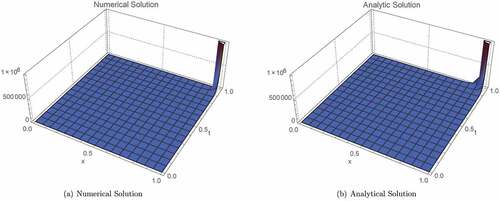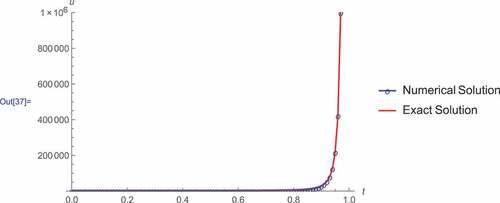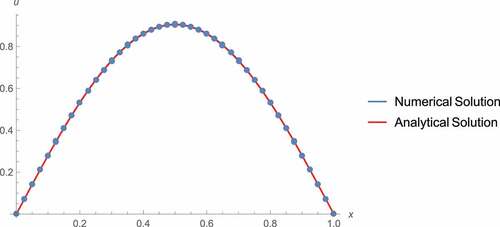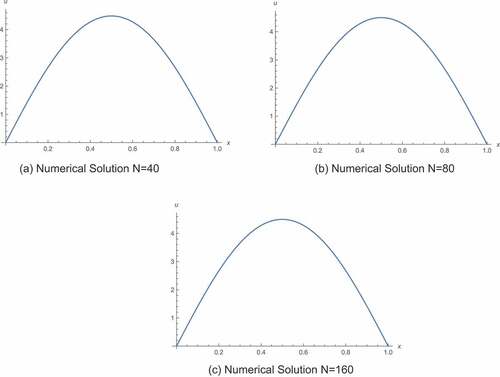Figures & data
Table 1. Coefficients of (5)
Table 2. Coefficients for the predictors
Table 3. Maximum errors for different step sizes for Example, 3.1
Table 4. Errors for the variable step implementation of the TDNM for Example, 3.1
Table 5. Maximum errors for different stepsizes for Example, 3.2
Table 6. Errors for the variable step implementation of the TDNM for Example, 3.2
Table 7. Maximum errors for different step sizes for Example, 3.3
Table 8. Maximum errors for different stepsizes for Example, 3.4
Table 9. Comparison of absolute errors for Example, 3.5
Figure 1. Graphical evidence for Example, 3.6, The blow-up in the analytical solution given by (b) is in agreement with that of the approximate solution given by (a). As
,
,
, which is in agreement with the approximate solution.

Figure 2. The results provided by the TDNM is in good agreement with the analytical solution. As , both the analytical and the approximate solutions blow-up.

Figure 3. The results provided by the TDNM (M = 10, N = 40) in block unification mode is in good agreement with the analytical solution. We observe that at , where a numerical method could perform poorly, the numerical solution is still in good agreement with the analytical solution.

Figure 4. Graphical evidence for Example, 3.7, . The results provided by the TDNM in block unification mode are in good agreement with the exact solution, and the errors are also small, validating the fact the TDNM performs well when applied to parabolic equations.

Figure 5. Graphical evidence for Example, 3.8. By considering the reference blow-up time of for
, the blow-up time is located only at the point
.

